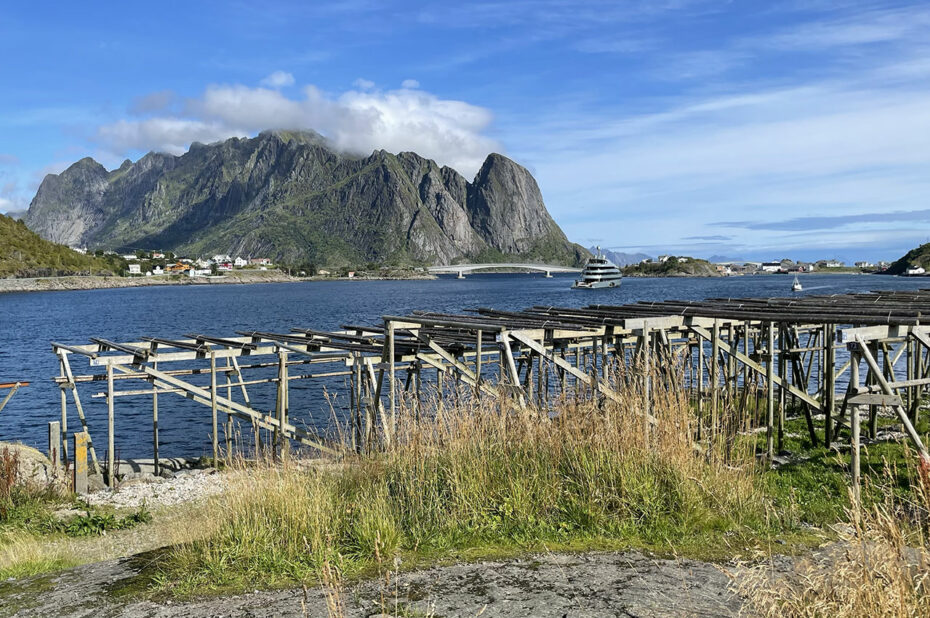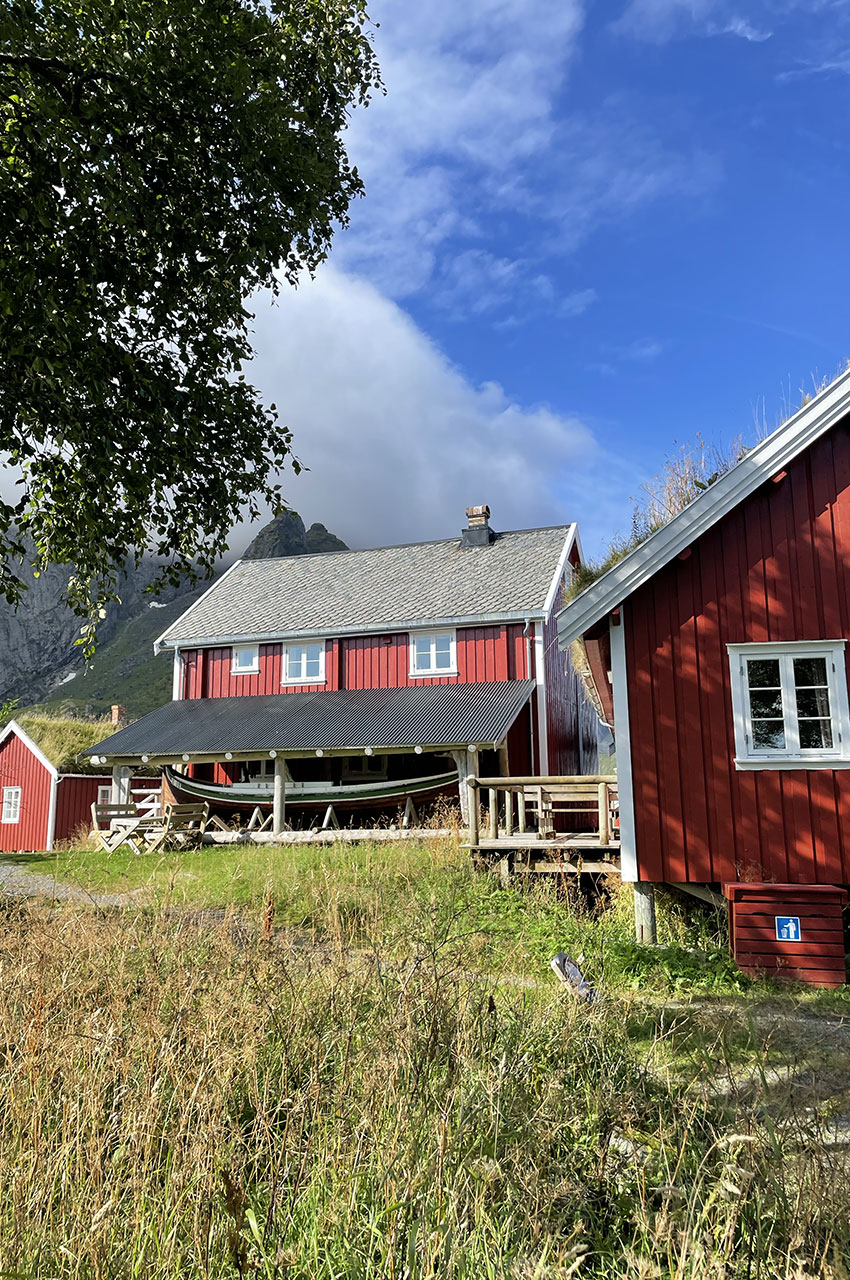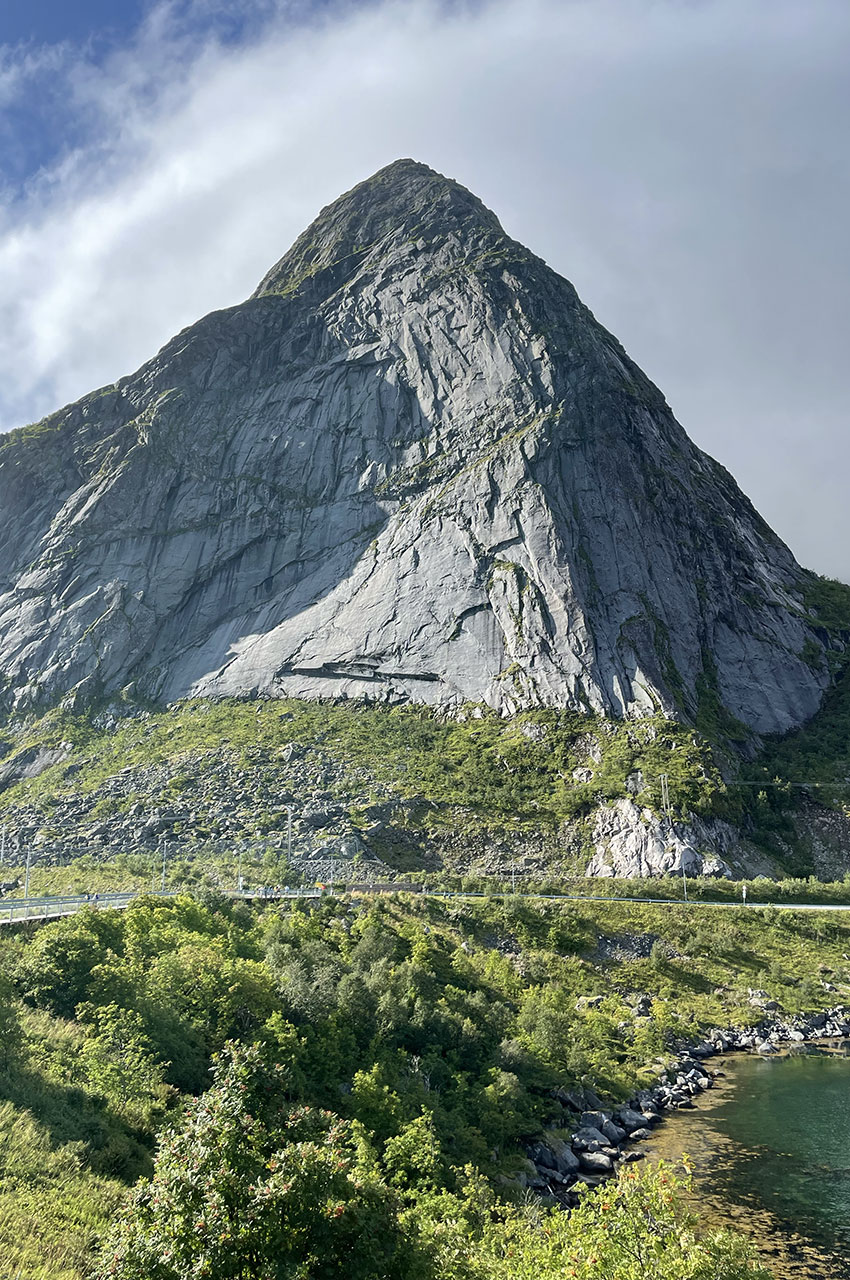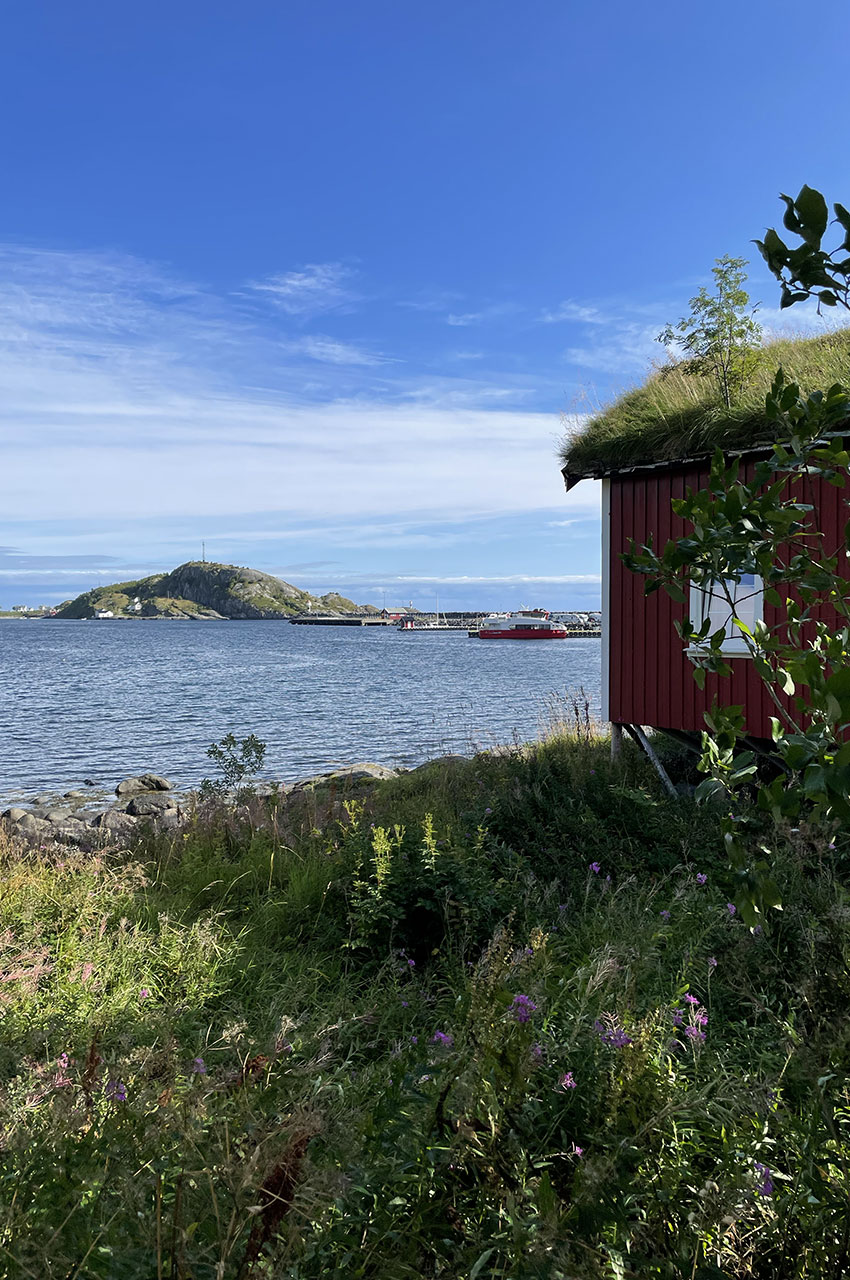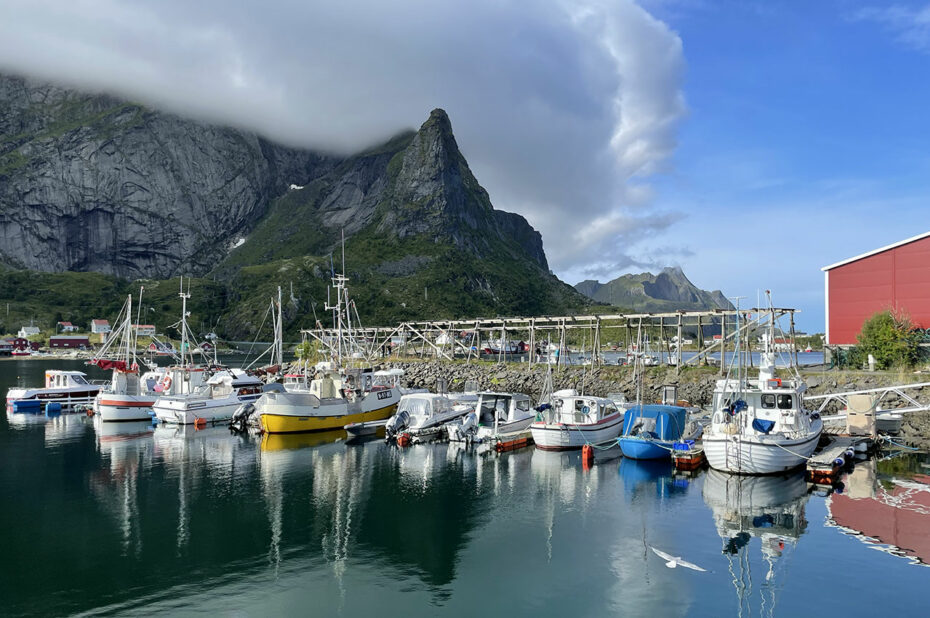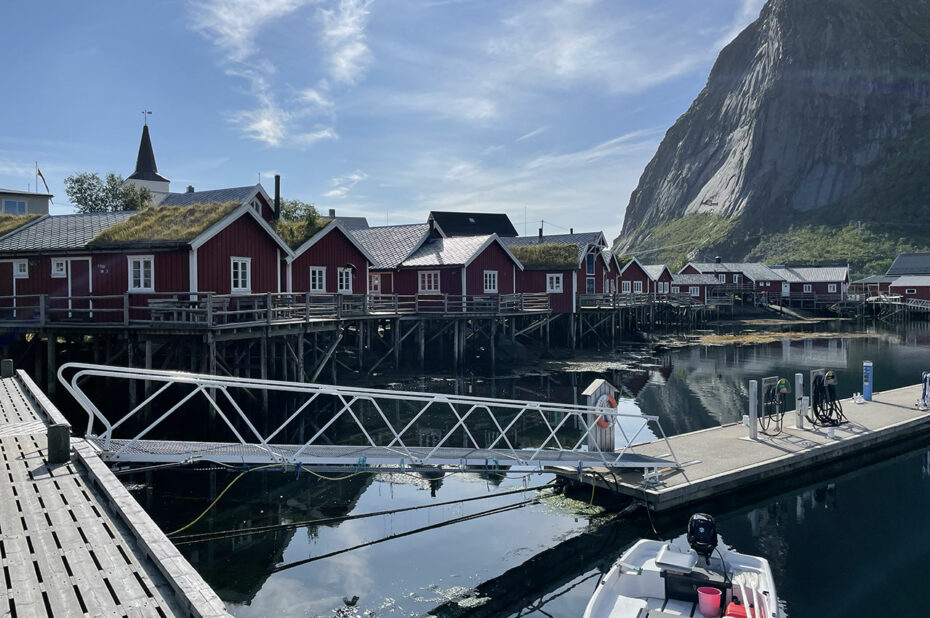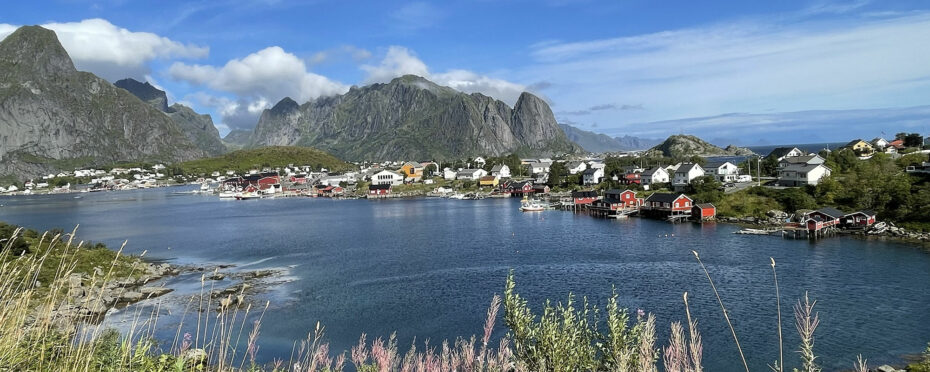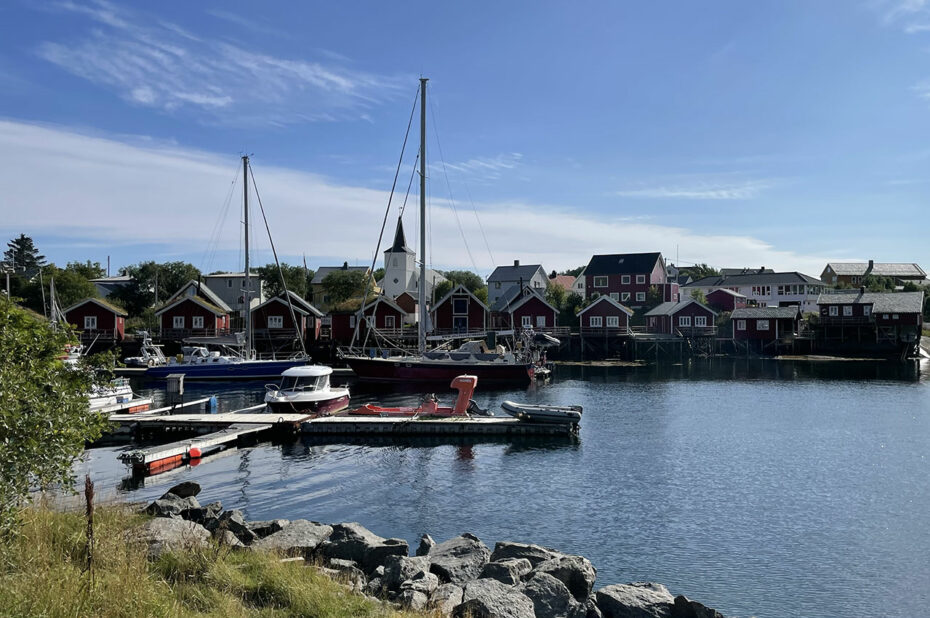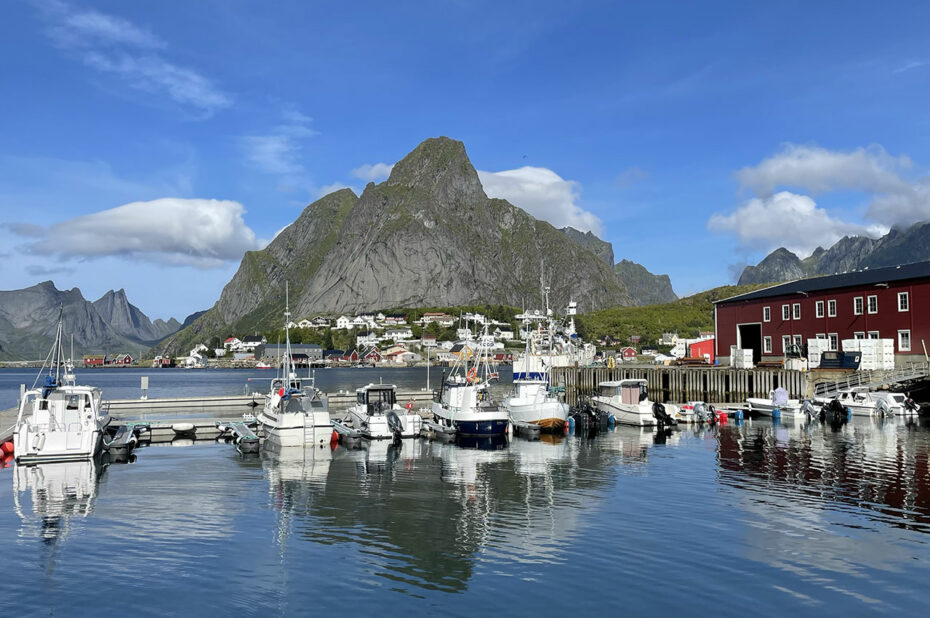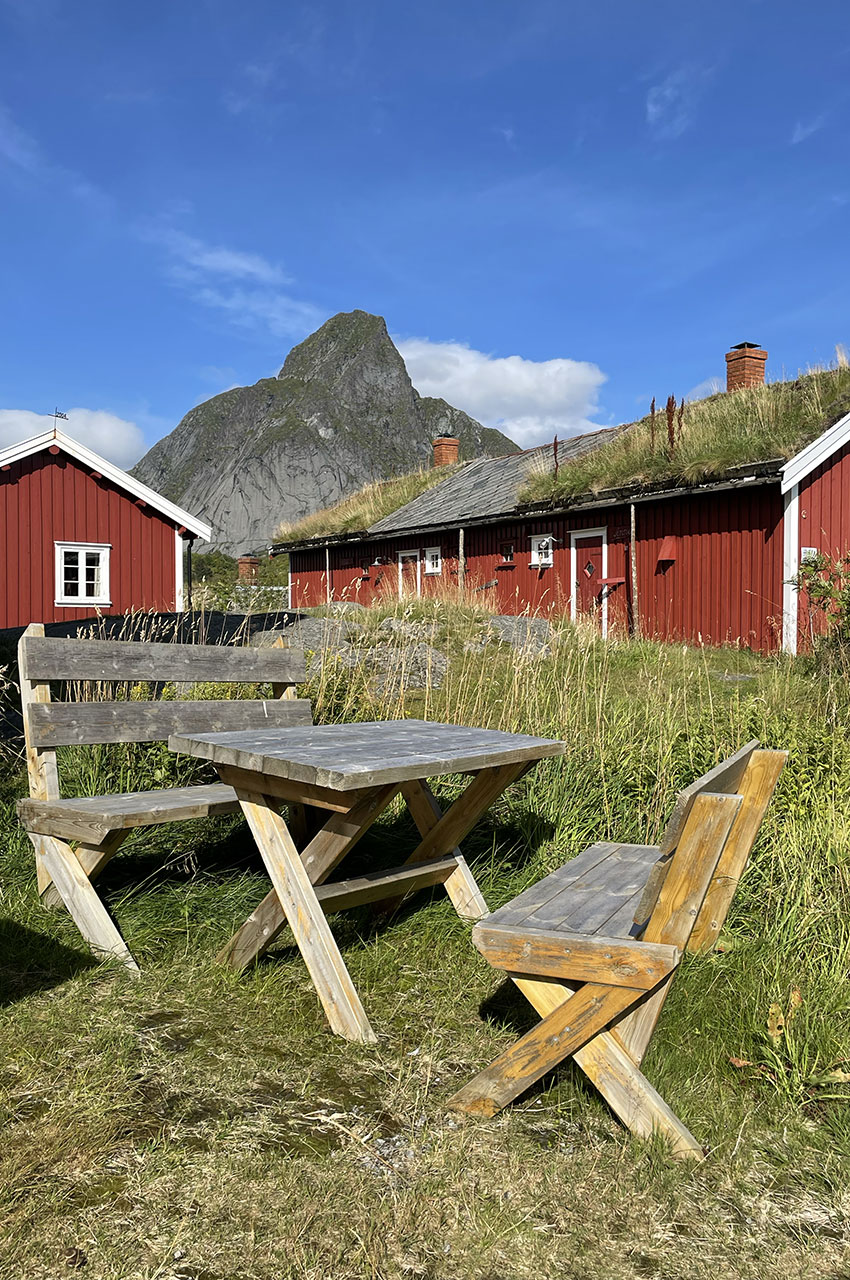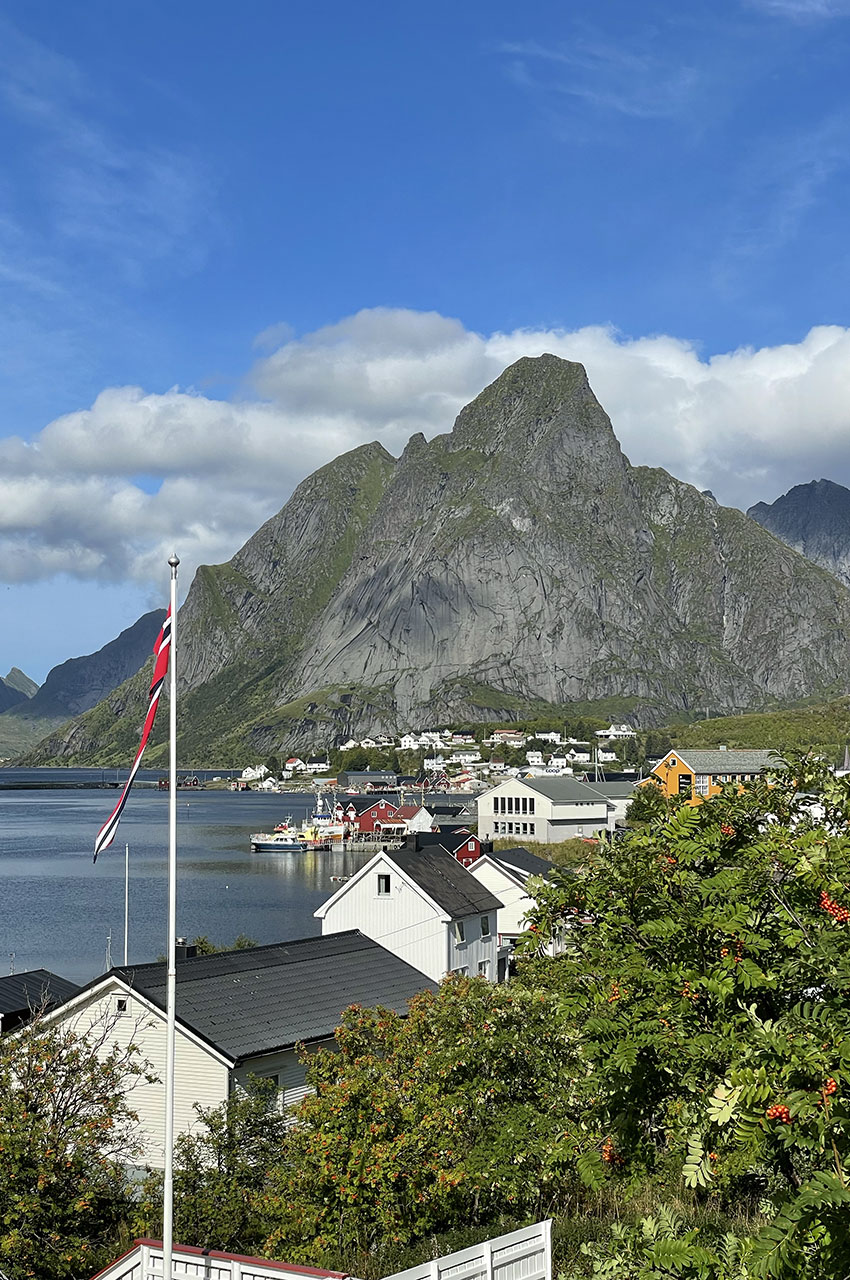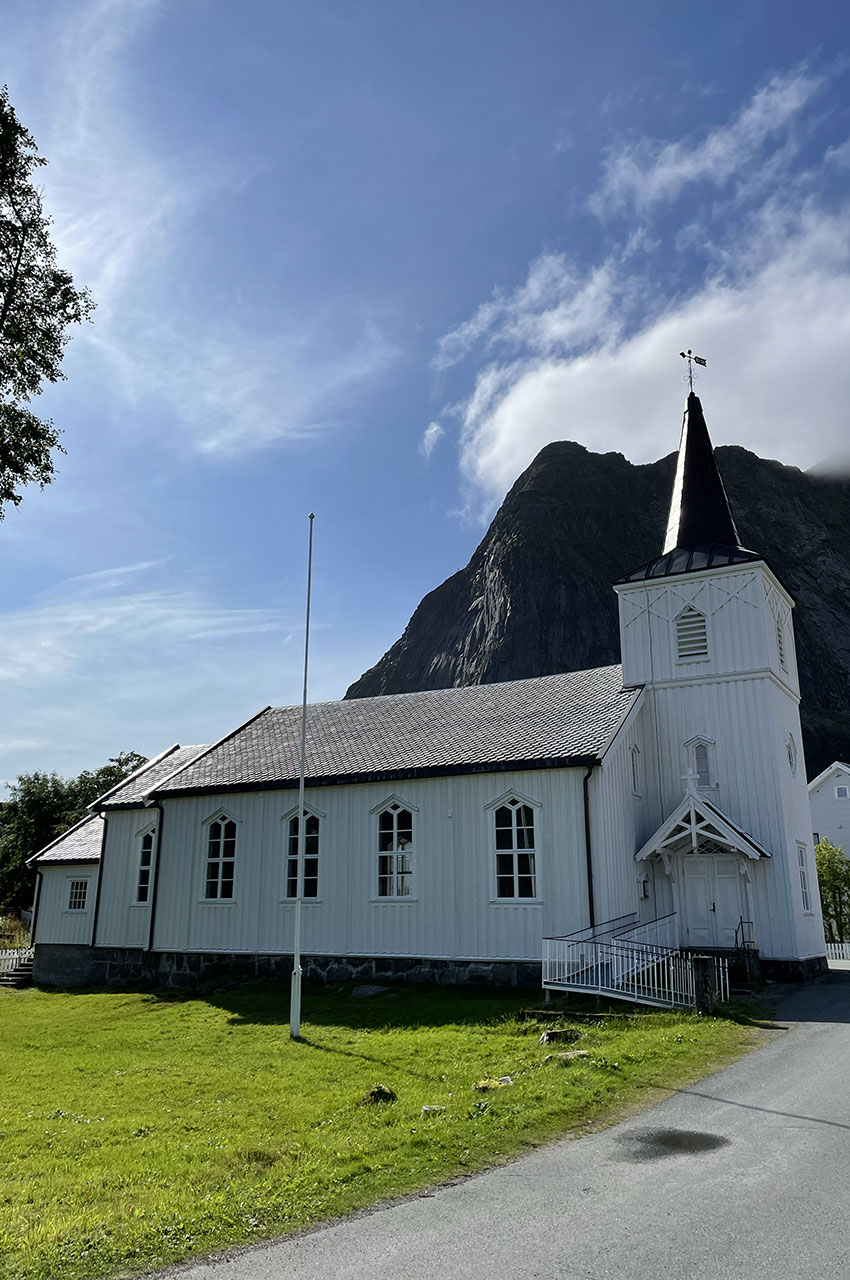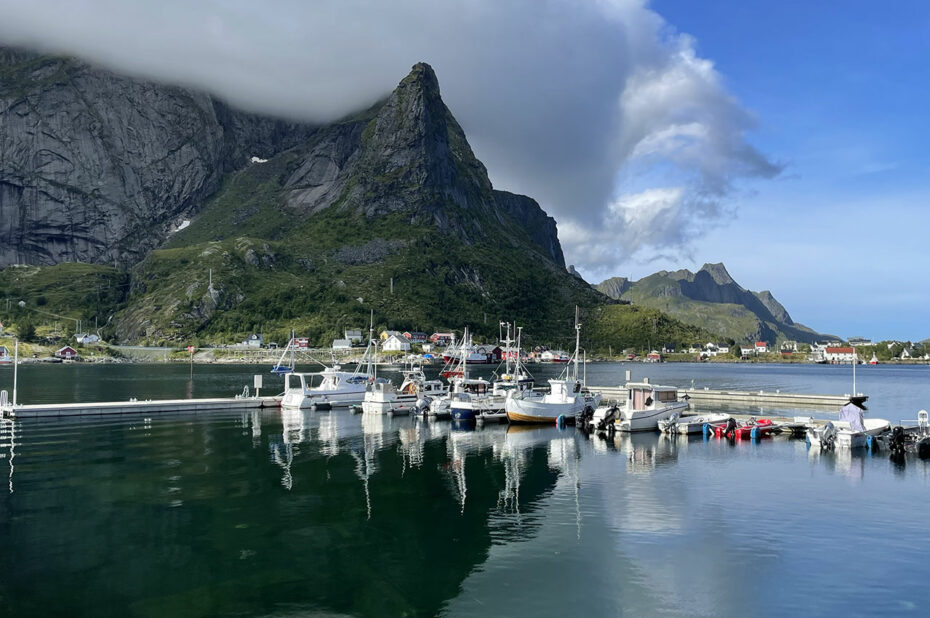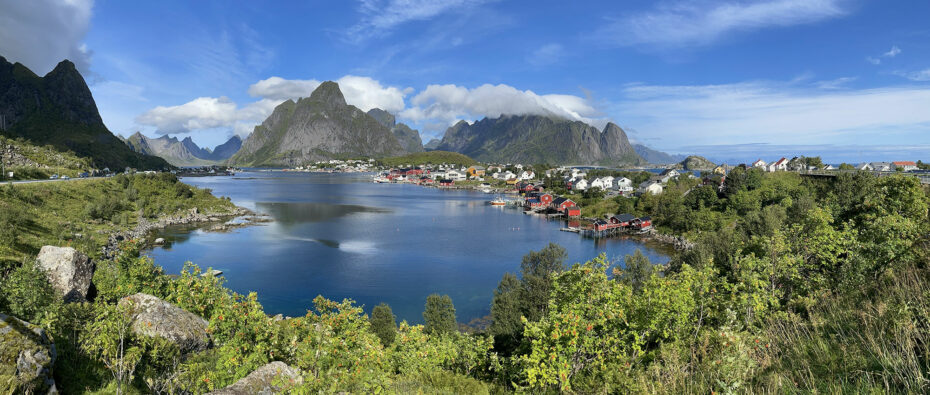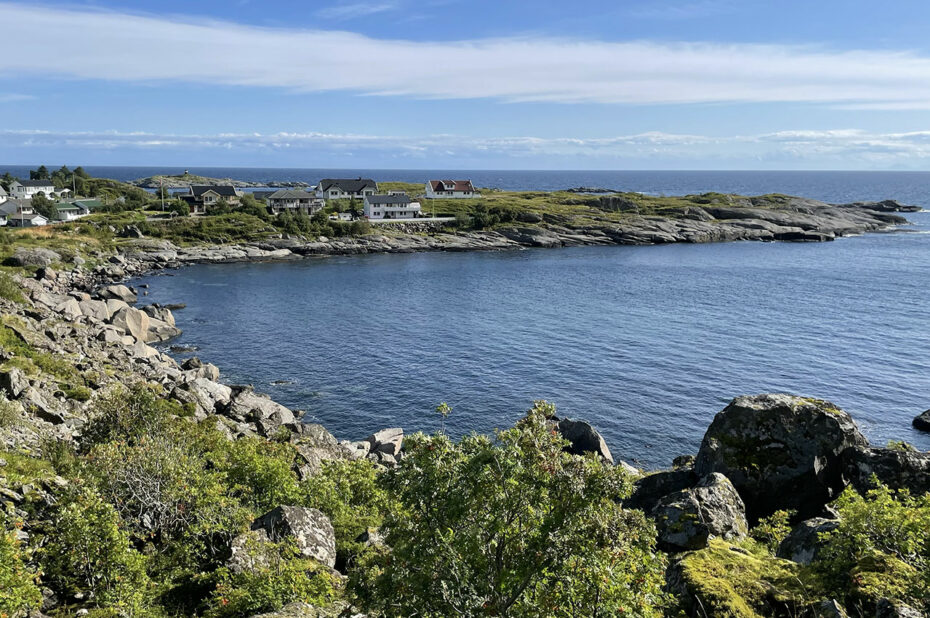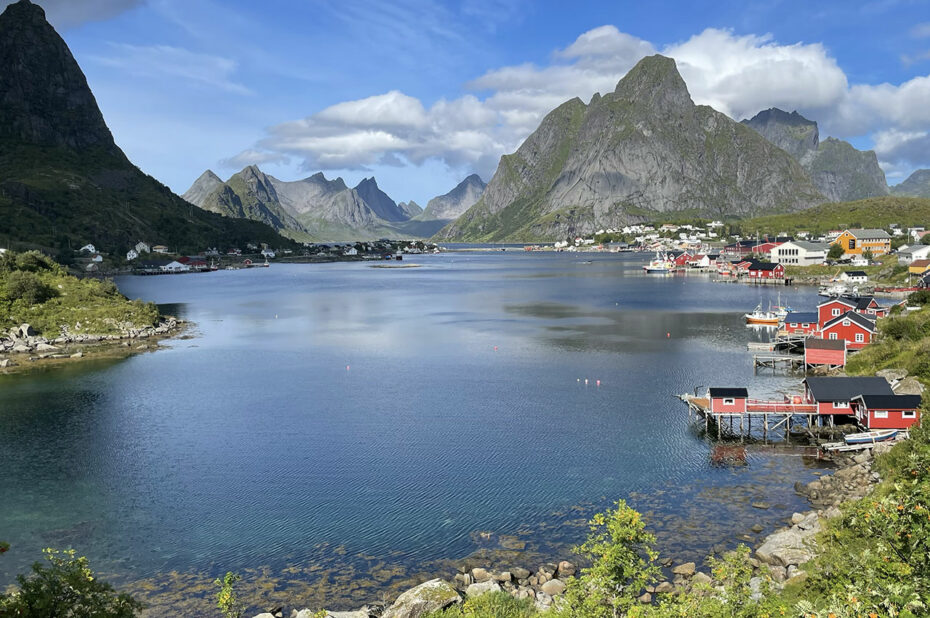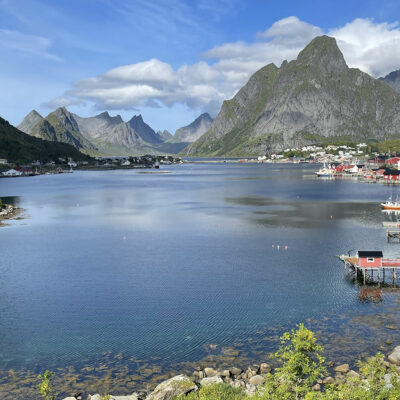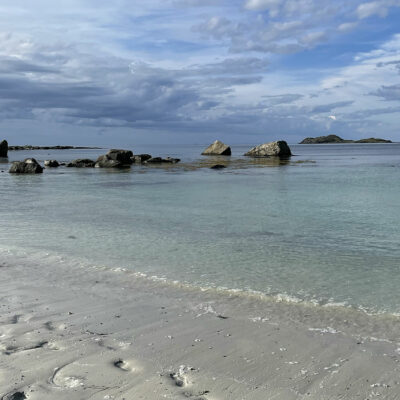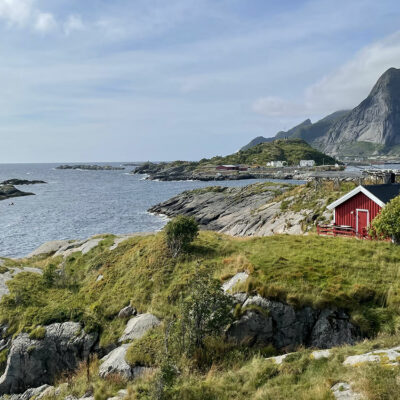
Nestled in the heart of Norway’s Lofoten archipelago, the village of Reine is a veritable tableau vivant where wild nature meets simple beauty. This small fishing port, perched on rocky islets, is often considered one of the most beautiful places in Norway.
Traditional fishermen’s houses, with their bright red facades, are reflected in the crystal-clear waters of the fjords. Surrounded by steep mountains and snow-capped peaks in winter, Reine offers breathtaking panoramas at every turn. Hiking enthusiasts will be delighted to explore the trails that wind through the surrounding landscape. Reinebringen, the mountain overlooking the village of Reine, is a very popular, if rather strenuous, hike: the 1.5 km route climbs some 500 m in altitude, with 1,600 stone steps!
Human activity on the Lofoten archipelago dates back some 5,500 years, but it was with the arrival of the Vikings that fishing took off. These daring sailors discovered the archipelago’s ideal conditions for preserving fish, thanks in particular to the technique of drying on wooden racks. In the 18th century, Reine became an important trading post. Fishermen flocked here to process and sell their fish. The village grew rapidly, with the construction of numerous rorbuer and processing plants. Unfortunately, much of Reine’s architectural heritage was destroyed during the Second World War. German bombing raids devastated the village, forcing residents to rebuild. In the 1970s, fishing, long the driving force behind the local economy, went into decline. But it was precisely at this time that Reine was rediscovered by tourists, seduced by its natural beauty and authentic charm.
Reine was visited on August 22, 2024.
Click on the picture to enlarge it and discover its caption.

